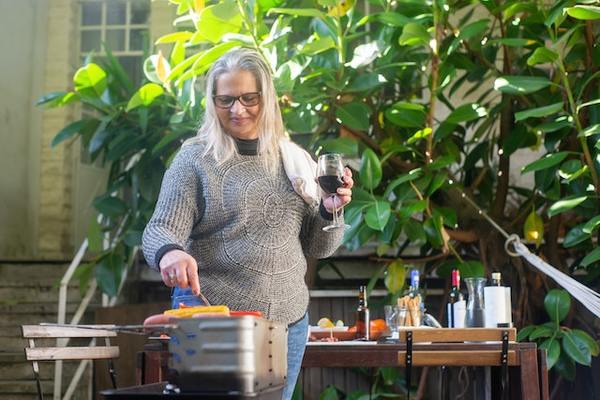--600px.jpg)
Want to learn how to taste wine like a professional? The best thing you can do is come to one of our wine tasting evenings but here are a few tips to help you figure out what you should be looking for.
When tasting, follow the S rule: Swirl, Sniff, Slurp, Savour. Swirling allows the wine to react with oxygen in the air and develops the flavours and aromas. Sniffing allows your brain to be flooded with memories of different smells; such as fruit, flowers and spices. It also gives you clues about the age of the wine and different winemaking techniques that may have been used.
Acidity in wine is not often talked about because it sounds so negative. In fact, it’s a very important element because it gives wine it’s mouth-watering zesty freshness. It also makes food pairing a cinch. Got a lemon or tomato-based dish? It matches perfectly. Got a rich, fatty or creamy dish? It cuts through the stodge! The way you will detect it in the wine is if your mouth starts watering and your gums are tingling. Some great examples of wines with high acidity are Champagne, Gavi and Pinot Noir.
Body is the weight of the wine and how it feels in your mouth. Does it feel heavy like a milkshake? Then it’s full-bodied. If it goes down just like water then it’s light-bodied. Medium-bodied is anywhere in between. The body of the wine is made up of a variety of factors; from the levels of sugar, acid, tannin and alcohol present in the wine.
Sweetness is always a tricky one to get a handle on. Sometimes your brain tricks you into thinking there is sweetness on your palate because it tastes of fruit, when often the finish is actually dry. The trend these days is towards dry wines like Pinot Grigio and Sauvignon Blanc but there is so much to be discovered in off-dry or medium-sweet styles. If you were scarred by the cheap German stuff of the 80s, do not fear. Riesling is having a bit of a comeback and it’s the perfect pairing for Asian-inspired cuisine like thai green curry or sweet & sour dishes. It can handle the strong, aromatic flavours and the hint of sweetness balances the chilli heat.
Tannins are the dry, bitter sensation you taste when you have a sip of certain red wines. Different grape varieties have different levels of tannin, but each individual also has a different sensitivity to bitterness too so it can be a bit of a minefield trying to describe the level. Tannins help a lot with the body and structure of a wine, particularly when pairing with food. Italian grapes tend to be typically high in tannins, like Nebbiolo which is used to make Barolo or Sangiovese, one of the key components of Chianti wines.
The use of oak has been much maligned in white winemaking, particularly influenced by heavily-oaked Chardonnay styles from the 90s. Winemakers now tend to use oak in a much more restrained way. Oak should be like your seasoning, enough to bring out complexity and texture, but not enough to overwhelm or mask other layers of flavour within the wine. Now is the time to re-acquaint yourself with oaky wine!
Come and join us at an introduction to wine tasting to learn more!



--600px(1).jpg)